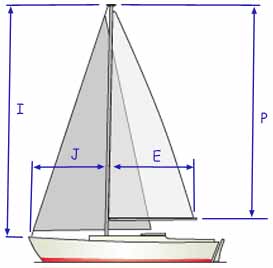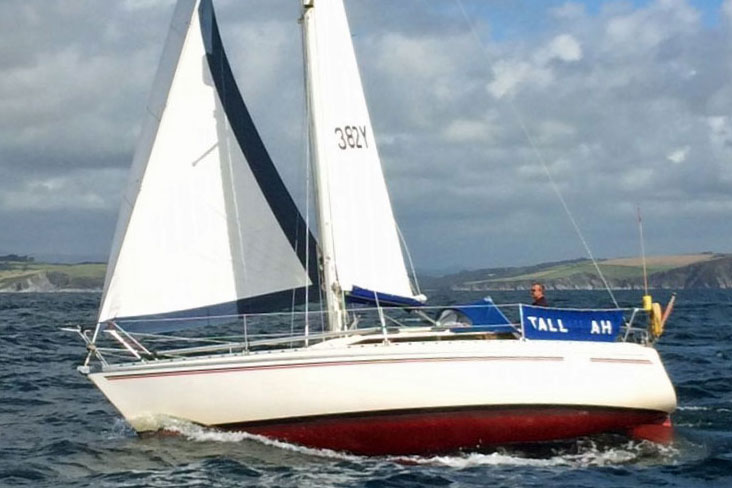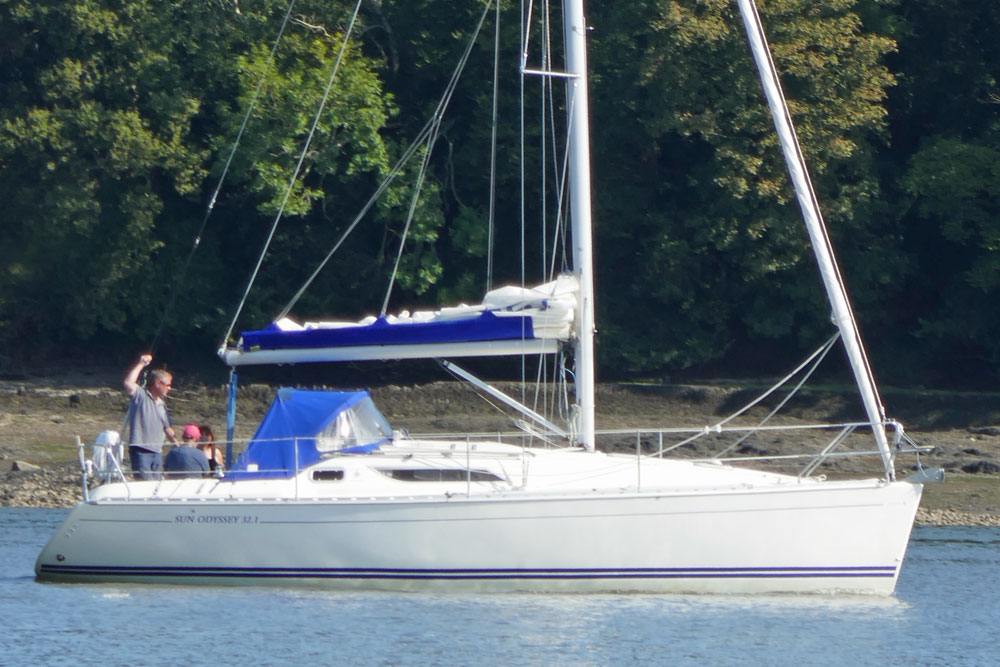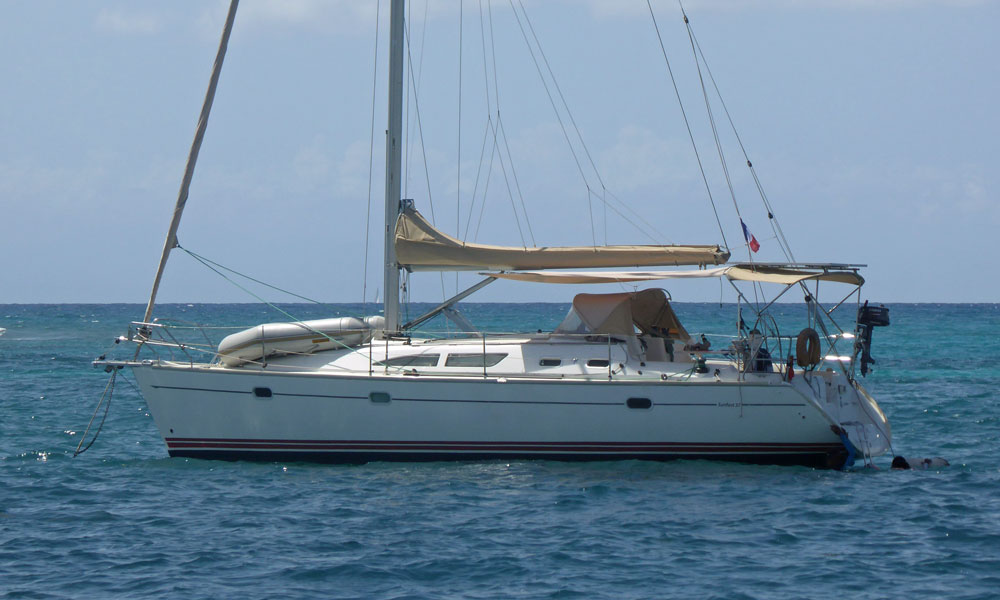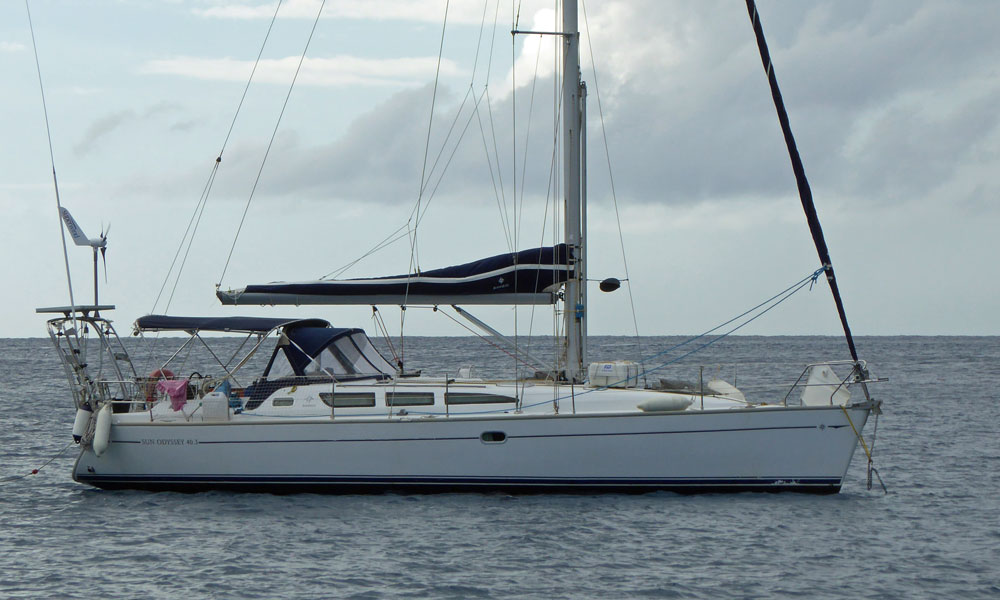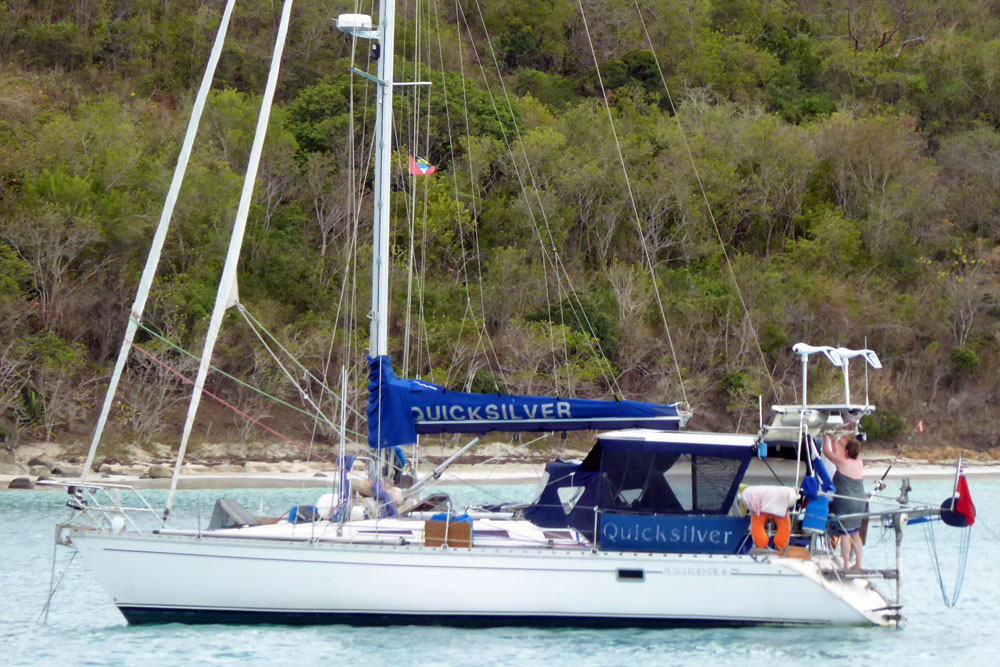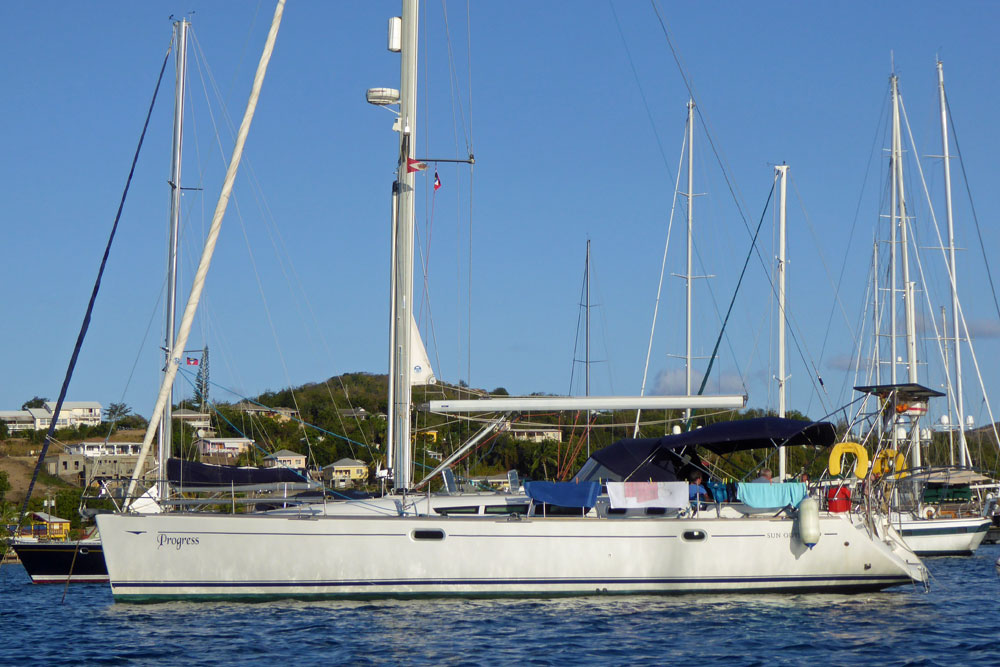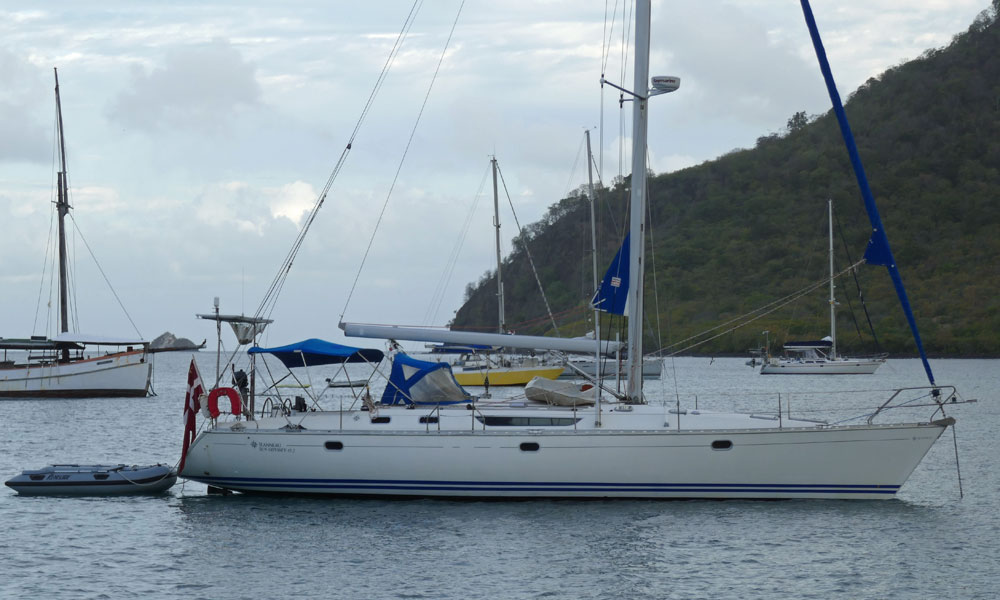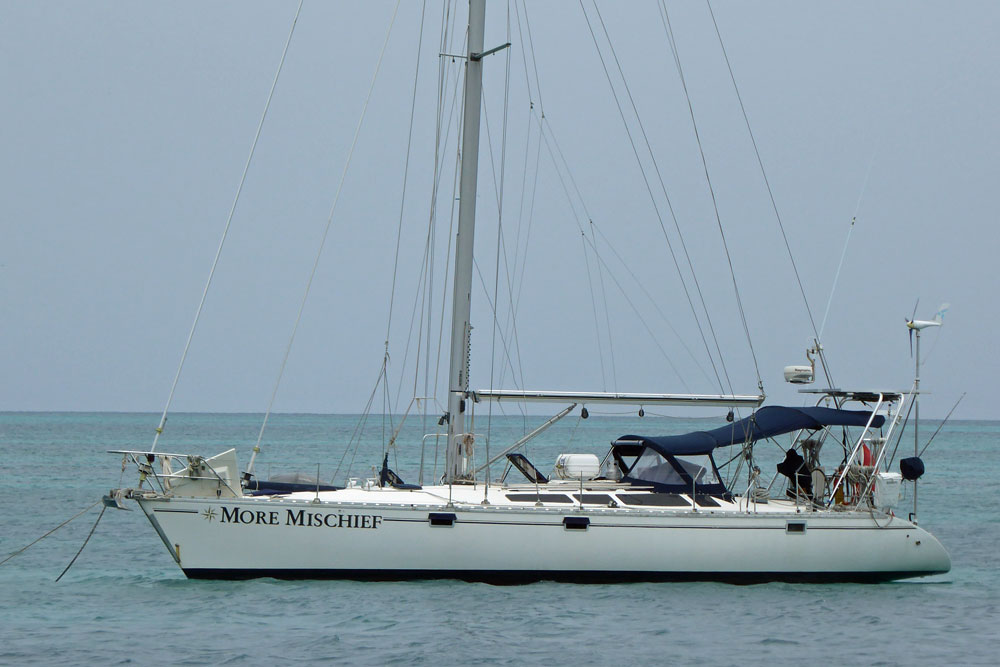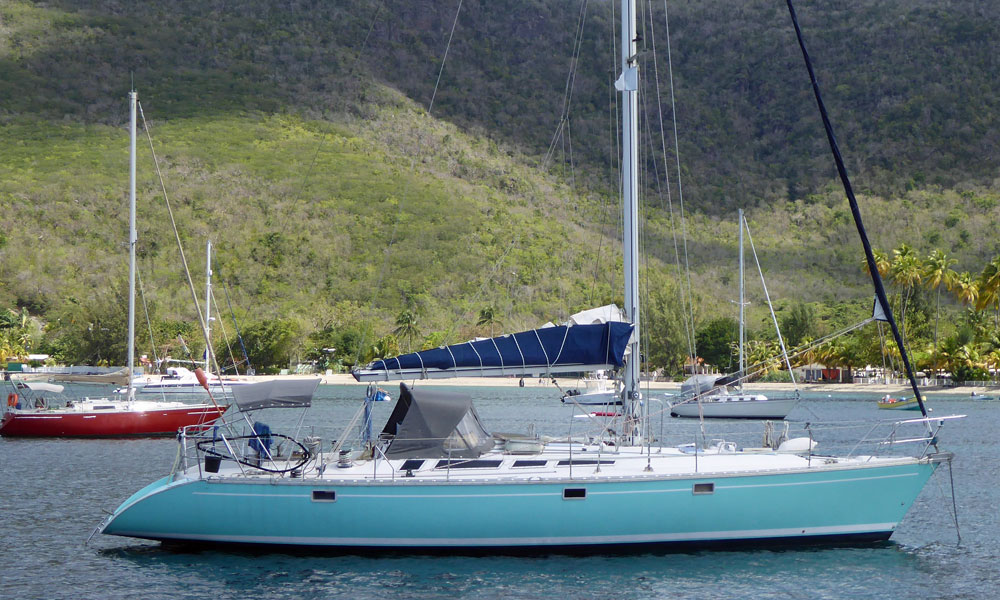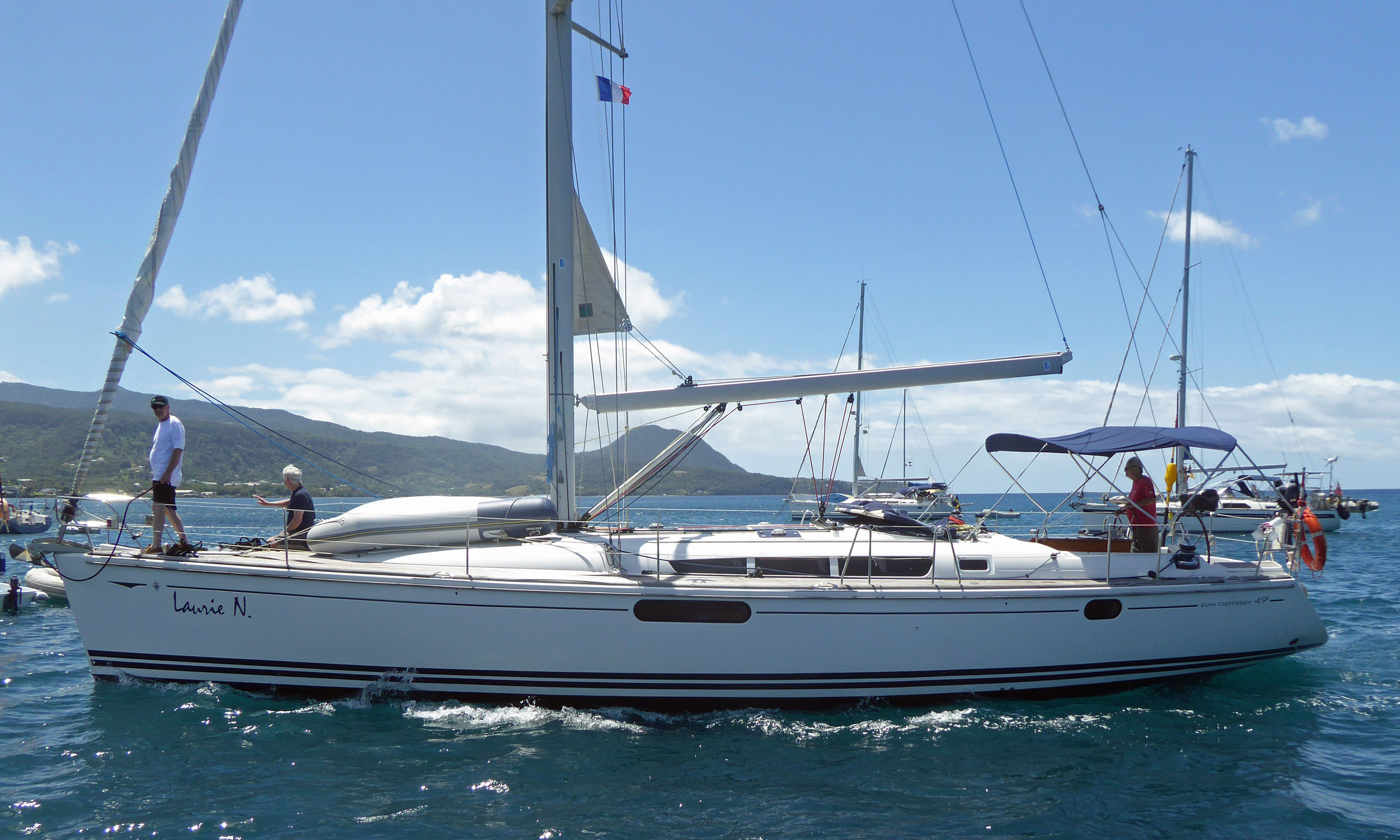- Home
- Cruising Yachts 40' to 45'
- Jeanneau Sun Odyssey 44
The Jeanneau Sun Odyssey 44i Sailboat
Specs & Key Performance Indicators
The Jeanneau Sun Odyssey 44i sailboat, designed by French naval architect Philippe Briand, is a product of Jeanneau, a boat builder based in Les Herbiers, France.
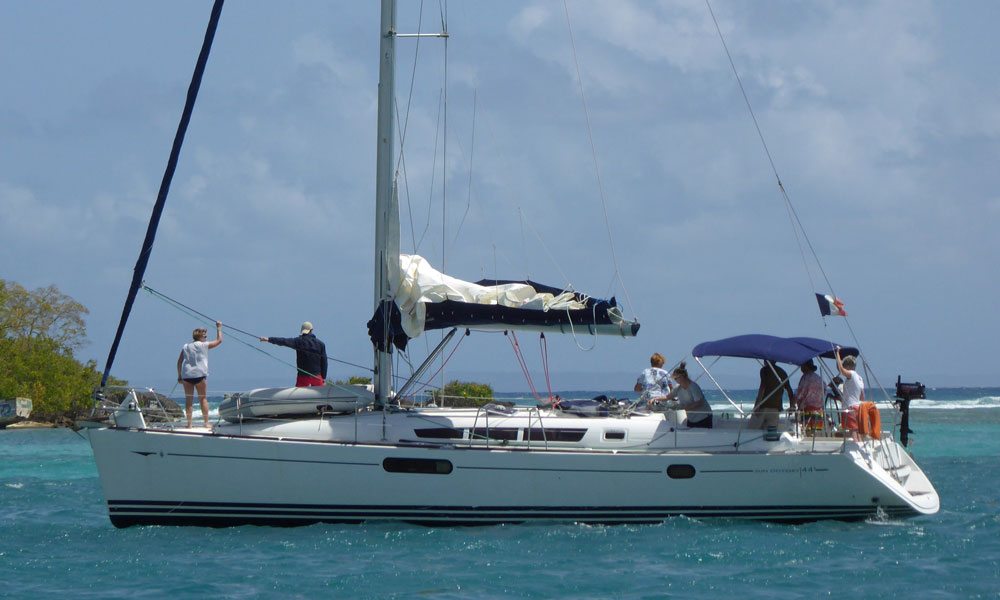 A Jeanneau Sun Odyssey 44i
A Jeanneau Sun Odyssey 44iPublished Specification for the Jeanneau Sun Odyssey 44i
Keel & Rudder Configuration: Bulb fin keel & spade rudder
Hull Material: GRP (Fibreglass)
Length Overall: 13.75 m (45'1")
Waterline Length: 11.5 m (37'7")
Beam: 4.37 m (14'4")
Draft: 2.05 m (6'9")
Rig Type: Fractional sloop
Displacement: 9,930 kg (21,888 lbs)
Ballast: 2,950 kg (6,504 lbs)
Water Tank Capacity: 615 L (162 US gal)
Fuel Tank Capacity: 240 L (63 US gal)
Hull Speed: Approximately 8.1 knots
Designer: Philippe Briand
Builder: Jeanneau
Year First Built: 2008
Year Last Built: 2012
Number Built: Approximately 300
Options & Alternatives
During its production run, the Jeanneau Sun Odyssey 44i had a notable alternative version known as the Performance Version. This version was designed for enhanced sailing performance and included several key differences from the standard model:
- Taller Mast: The Performance Version featured a taller mast, which increased the sail area by approximately 4%.
- Deeper Keel: It came with a deeper draft keel, improving the boat's stability and speed.
- Prestige Series Sails: The sails were upgraded to Prestige series, tri-radial cut in Mylar/Taffeta.
- Feathering Propeller: This version included a feathering propeller for better performance under sail.
These modifications aimed to provide a more powerful and faster sailing experience while maintaining the comfort and features of the standard Sun Odyssey 44i.
Sail Areas & Rig Dimensions
I (foretriangle height): 16.54 m (54.26 ft)
J (foretriangle base): 4.65 m (15.26 ft)
P (mainsail luff): 15.27 m (50.10 ft)
E (mainsail foot): 5.30 m (17.39 ft)
Total Sail Area: 78.9 m² (849.62 ft²)
Published Design Ratios
The Key Performance Indicators (KPIs)
Based on the published design ratios for the Jeanneau Sun Odyssey 44i sailboat, its theoretical sailing characteristics are:
- Sail Area/Displacement Ratio (SA/D) of ~17: This ratio indicates that the Sun Odyssey 44i has reasonably good performance capabilities. It will not be considered underpowered and should perform well in moderate wind conditions. This puts it in a range where it won't reach high-performance speeds but will be quite capable for enjoyable cruising.
- Ballast/Displacement Ratio (B/D) of ~36%: With a ballast-to-displacement ratio just slightly below 40%, the boat has a moderate level of stiffness and stability. It should be able to handle wind fairly well, though it might not be as stiff as those with a higher B/D ratio. This means it will offer a balance between performance (less stiff) and safety (more stability).
- Displacement/Length Ratio (D/L) of ~178: This categorizes the Sun Odyssey 44i as having a Light Displacement. With this ratio, the boat will require relatively less sail area to reach its design hull speed, making it more responsive and quicker under sail compared to boats with higher displacement ratios.
- Comfort Ratio of ~30: A comfort ratio around 30 suggests that the boat has a moderate level of motion comfort, typical of a moderate bluewater cruising boat. While it won't provide the same level of pitch and roll dampening as a heavier bluewater boat, it is suitable for coastal cruising and can handle occasional passages in heavier seas reasonably well.
- Capsize Screening Formula of ~2.08: With a capsize screening value slightly above 2.0, the Sun Odyssey 44i is on the threshold for bluewater capability. This means it is primarily designed for coastal cruising but can handle some offshore passages, though more conservative sailors might prefer a lower value for extensive bluewater cruising.
Summarizing, the Jeanneau Sun Odyssey 44i is a well-balanced sailboat with good performance and sufficient stability, suitable primarily for coastal cruising but capable of handling some offshore passages. Its design makes it responsive and comfortable for moderate bluewater sailing, though in very rough ocean conditions, caution would be advised.
Here's how to calculate the KPIs yourself - without having to wrestle with the mathematics...
Design Ratios: Notes of Caution...
- The Sail Area/Displacement Ratio (SA/D): This ratio provides an estimate of the sail power relative to the boat's weight, which can indicate potential speed in various wind conditions. But it doesn't account for the efficiency of the sail plan, the rigging, or the skill of the crew. Real-world performance can vary significantly based on these factors.
- The Ballast/Displacement Ratio (B/D): This ratio gives an idea of the boat's stability and stiffness, which is crucial for handling and safety. But it doesn't consider the distribution of the ballast or the hull shape, both of which can greatly affect stability. A high B/D ratio alone doesn't guarantee a stable boat if the ballast is poorly distributed.
- The Displacement/Length Ratio (D/L): This ratio helps predict the boat's speed potential and its behaviour in different sea conditions. But it doesn't account for the hull design or the boat's overall weight distribution. Two boats with the same D/L ratio can perform very differently if their hull shapes are different.
- The Comfort Ratio (CR): This ratio estimates the boat's motion comfort in a seaway, which is important for long passages. But it doesn't consider the boat's interior layout, which can also affect comfort. Additionally, personal tolerance to motion varies, so a boat that is comfortable for one person might not be for another.
- The Capsize Screening Formula (CSF): This formula assesses the likelihood of a boat capsizing in heavy seas, which is critical for offshore safety. But it doesn't take into account the boat's handling characteristics or the skill of the crew. A boat with a low CSF can still capsize if poorly handled in severe conditions.
General Limitations
- Static Nature: These ratios are static measurements and don't account for dynamic factors like wave action, wind gusts, or crew actions.
- Simplification: They simplify complex interactions into single numbers, which can be misleading. Real-world performance is influenced by a multitude of factors that these ratios can't fully capture.
- Context: The context in which the boat is used (e.g., coastal cruising vs. offshore racing) can greatly affect how these ratios should be interpreted.
In summary, while these ratios provide valuable insights into the theoretical performance characteristics of a sailboat, they should be used as part of a broader assessment that includes practical experience, sea trials, and expert advice.
.........................
I wrote this article using GPT-4, OpenAI’s large-scale language-generation model, as a research assistant to gather information, summarize research findings, and provide suggestions for the content and structure of the article.
Dick McClary, creator and owner of sailboat-cruising.com
.........................
Other sailboats in the Jeanneau range include:
Recent Articles
-
Is An SSB Marine Radio Installation Worth Having on Your Sailboat?
Apr 14, 25 02:31 PM
SSB marine radio is expensive to buy and install, but remains the bluewater sailors' favourite means of long-range communication, and here's why -
Correct VHF Radio Procedure: Your Questions Answered
Apr 14, 25 08:37 AM
Got a question about correct VHF radio procedure? Odds are you'll find your answer here... -
VHF Marine Radio; Which One is Right for Your Boat?
Apr 14, 25 05:09 AM
If you're looking to buy a VHF Marine Radio the choice can be a bit overwhelming. So what should it be, a fixed VHF or a handheld VHF? Maybe one with AIS or GPS built in perhaps?
